In this post, Fiona McCulloch argues for the timeliness of critical engagement with children’s and young adult literature – and how it can help chart journeys into new ways of thinking…
*
You’re reading too much into it’… ‘it’s just a children’s story’ … ‘don’t ruin it for me’… These are just some of the defensive attitudes interjected against critically engaging with literature for the young. Undoubtedly children’s books do ignite a nostalgic element not unlike a comfort blanket to buffer us against the world’s storms, and we remember cosying up with a good book as part of our childhood memory. To invade that sacrosanct space, then, becomes a kind of trespass against a shared cultural nostalgia whose gatekeepers baulk at such sheer insolence.
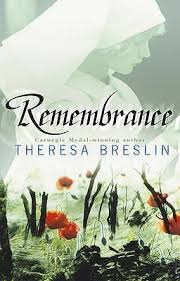
Jacqueline Rose (1984) argues that this defence of children’s literature is intertwined with discourses of childhood innocence perpetuated since Romanticism, where ‘If the child can still be in touch with that purity, then writing for children is the closest that we, as adults, can get to it’ (p.49). But adulthood’s shared wistful memory is as dependent upon narrative retelling, fictionalising and re-framing as any children’s book. Besides trailblazers like Rose and John Stephens, when I embarked upon my PhD, children’s literature as a serious academic pursuit was virtually unheard of except perhaps in the United States or in Education Departments but certainly not in serious English Departments. My peers’ responses ranged from bemusement to condescension, bolstered in their pursuit of altogether more cerebrally and canonically demanding choices deemed much less “feminised”.
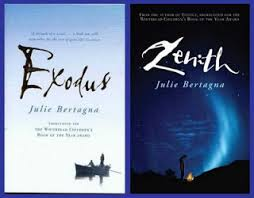
When I established an undergraduate course in children’s literature, male academics generally smirked and sneered and one (female) academic confided that she could never study the subject as it would simply ruin it for her. To all of those naysayers, I contend that the study of children’s literature is as valid, complex and rewarding as any other literary form. To deny its intellectual capacity is a gross injustice to a literature that is replete with depth, breadth, imagination and a capacity to question. As Peter Hunt (1992) argues, ‘privileging childhood as this sort of “other”, we misrepresent and belittle what we are’ (p.13) in the same way that “revering” the Angel-in-the-House ensnared Victorian women. Setting children’s literature apart from academic engagement and relegating it to a domesticised sphere (as though somehow any adult with an interest in the subject must ooze parental nurture yet lack intellectual rigour) for whatever reason belittles and ridicules its value, deriding it as lightweight and beneath academic attention. Not that there’s anything wrong with being parental and those who are certainly don’t lack intellectual rigour, but not everyone with an interest in such literature is necessarily so. In a climate where the Humanities must perpetually justify its existence, it seems contrariwise, if I can be Carrollian for a moment, to single out children’s literature and young adult (YA) fiction as being unworthy of intellectual attention, investment or outreach.

Yet, time has perhaps inevitably shaken up the status quo so that students (even if I have to convince some that it’s not cosy innocence) can now read children’s literature increasingly at universities, and postgraduate degrees are no longer anomalies. Has children’s literature reached its Goldilocks zone, finding a perfect academic home? Well, there are still entrenched views on the matter, but one majorly exciting step forward is the growing interest in Scottish children’s literature. Its heritage is steadily being recognised as a literary field in its own right and also as a fundamental aspect of Scottish Studies. As such, Scottish children’s literature and its critical engagement are integral to the nation’s dynamically heterogeneous cultural and geopolitical remapping.
The opening of Moat Brae in Dumfries next spring is testament to this. A site of play during J.M. Barrie’s boyhood, this house and garden fuelled an imagination that later invented Peter Pan’s Neverland. It seems, then, only fitting that Moat Brae will be established as Scotland’s National Centre for Children’s Literature and Storytelling. For Barrie, Neverland is a mind-map conjured by a child’s imagination, but irretrievably lost upon entering adulthood: ‘We too have been there; we can still hear the sound of the surf, though we shall land no more’. Play, then, is the vital spark to ignite childhood Neverlands, so Moat Brae ideally combines story and space to generate endless possibilities for young visitors. But, beyond that, children’s fiction is, like all literary texts, vibrantly heteroglossic and, as such, provides a worthy critical source for theoretically sophisticated endeavours.
The pleasure of the text, then, is not negated but, rather, enhanced by intellectual scholarly rigour. Far from reading too much into children’s books and their cosily innocent tales, Roderick McGillis (2010) insists though ‘many books for the young are disarming in their ostensible simplicity’, nevertheless ‘The possibilities for interpretation of this literature are as varied as they are for any literature’ (p.14). Critical interlocution, then, enriches children’s literature, since ‘Theory has taught us that what appears simple does so because we have not looked closely enough at that simple thing’ (p.14). As with all marginalised texts, theoretical approaches enable this literary treasure trove to be reclaimed from the dust of discarded toy boxes. By doing so, we can begin to appreciate their rich diversity as literary texts.

The intended reader of children’s and YA fiction is also significant, not least in terms of citizenship and social inclusion. In an expanding world of shrinking resources and global risks, children’s literature, as well as offering aesthetic-political dimensions also serves a vital pedagogical role. Maria José Botelho and Masha Kabakow Rudman (2009) write, ‘Children need to see themselves reflected so as to affirm who they and their communities are. They also require windows through which they may view a variety of differences. Books are one way they learn about the world’ (p.1). To understand difference enables a comprehension of the world and one’s place within it, so that being represented in fictional format is a crucial aspect of childhood and adolescent development. How children’s literature imagines the world serves as a map for future citizens that equips them to understand diversity and bridge the gap between self and other. Likewise, John Stephens (1992) says, ‘Writing for children is usually purposeful, its intention being to foster in the child reader a positive apperception of some socio-cultural values’, which ‘include contemporary morality and ethics’ (p.3). The shared cultural values identified by Stephens equate with Botelho and Rudman’s mirror, while ethical responsibility to others is encouraged through ‘windows’ that portray difference.
Maria Nikolajeva (2014) extends this understanding of children’s literature’s socio-cultural development to consider how it enhances cognitive development insofar as ‘reading fiction makes the brain simulate cognitive and affective responses to the actual world’, and, as such, ‘can improve our understanding of the actual world’ (p.8). While all fiction does this, with specific reference to children’s literature, Nikolajeva argues that its educational aspect teaches the child reader how to empathise with others: ‘Novice readers have limited life experience of emotions; therefore, fiction can offer vicarious emotional experience for readers to partake of, long before they may be exposed to it in real life’ (p.79). Creative writers like Ursula Le Guin are similarly aware of the pedagogy as well as poetics of children’s literature: ‘We read books to find out who we are. What other people, real or imaginary, do and think and feel […] is an essential guide to our understanding of what we ourselves are and may become’.

Such fiction, then, provides an aesthetic, cultural, geopolitical and cognitive poetics, engaging with contemporary concerns and challenges in order to navigate towards a trajectory of ethical possibilities. It charts journeys that develop new ways of thinking for the nation and beyond, envisaging communities that can sustain its readers as tomorrow’s cosmopolitan citizens (see McCulloch 2017). The fiction itself becomes an intellectual, creative and geopolitical map through which young readers navigate their journeys to adulthood. Children’s and YA fiction is aimed at a readership that is also susceptible to cortical remapping from exposure to external stimulus, such as developing knowledge through reading. Thus, rather than being a fixed, static entity, the brain’s malleable capability of redeveloping one’s mind-set, is comparable to such fiction’s trajectory of dynamic heterogeneity. Children’s cartographical fiction charts ‘the struggle for young people’s minds’ (Stephens, p.ix) by opening neural pathways that envision an empathetic and ethical future potential.
By considering reading’s neurobiological impact, cognitive criticism can be extended to consider a cortical poetics of children’s and YA fiction, and that is where my research journey has recently embarked upon. Bogdan Draganski and his co-authors’ article, ‘Temporal and Spatial Dynamics of Brain Structure Changes during Extensive Learning’ (The Journal of Neuroscience, 2006) finds that medical students’ grey matter increased significantly within a matter of months due to a greater acquisition of knowledge. They conclude, ‘It is reasonable to assume that plasticity is a characteristic of the nervous system that evolved for coping with changes in the environment. Understanding changes in brain structure as a result of learning and adaptation is pivotal in understanding the characteristic flexibility of our brain to adapt’. Neuroscientific developments make a direct correlation between reading and neuroplasticity in their discovery of a marked improvement in grey matter by students reading medical books to prepare for exams.
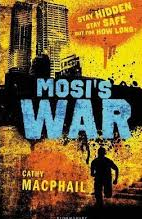
If medical books can enhance grey matter, then the dialogical capacity of fictional texts must surely develop it even more acutely. Paul B. Armstrong (2013) recognises literary texts’ ‘neuroaesthetic’ impact, noting that ‘cognitive critics focus on psychology and its studies of the mind rather than on neuroscience and its analysis of the brain’ (p.xiii). For Armstrong, fusing cognitive and cortical criticism will enrich literary studies through a mind/brain approach rather than separating these categories within disciplines of biology and psychology. In terms of children’s and YA fiction, such poetics could significantly develop critical readings of adolescent agency and childhood empowerment in these literary texts. Thus, as well as offering neuroaesthetic benefits, the neuroplasticity of reading children’s and YA fiction could encourage a cortical remapping of cultural and political discourses. Reading children’s and YA fiction, then, serves as an interrogative neuropolitical challenge to dominant hegemony. So, it’s not just that fiction has a cognitive psychological impact, as would be considered in Bibliotherapy, but that it actually impacts upon cortical grey matter. In turn, the link between reading and cortical enhancement is surely also a strong employability case for defending the study of Literature at University. Literary studies offer a space of interrogative reading to develop and enhance neural pathways, all of which are key drivers in critical thinking and would, presumably, be attractive skills to identify in future leaders.
Children’s and YA fiction, then, are clearly fundamental contributors to cortical remapping within such a vibrant malleable period as childhood and adolescence. As a discursive medium, such literature serves as a viable intellectual tool or neural pathway that offers the realpolitik of social change. So, to recap, if reading medical books can remap the brain exponentially, presumably fiction allows for an even more interesting cortical remapping, given that it offers dialogical space for the reader to intervene and engage with the text’s dynamic heteroglossia rather than statically digesting the rote learning of facts. In other words, the interactive act of reading for a young person is a neurobiological as well as socio-political pathway towards cultural enhancement and remapping.
Reading is vital in equipping future citizens with socio-political empowerment and consciousness, and cognitively enhances their intellect at a crucial point of developmental growth. Children’s and YA fiction are the imaginative vehicles in which those future possibilities are conveyed, and they allow a space in which adolescent agency is realised. That’s particularly important because Scotland’s post-devolution momentum that led to the 2014 independence referendum very much ignited the interest and participation of the nation’s youth, both in the Yes and No camps. The Scottish Government recognised this, and voting was granted from 16 years upwards. Reading is vital to critically interrogate dominant discourses in a post-truth world and to encourage critical interrogation within future citizens. To that end, ‘it seems that adolescent activism has been sparked at least in part by the imaginative narratives of children’s and YA fiction, where young protagonists are leading by example in dialogically renegotiating and reshaping their worlds’ (McCulloch 2017, p.180).
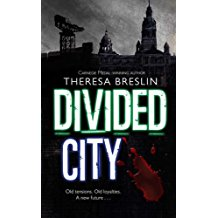
In a political climate driven by vocational degrees and employability, where the Humanities are often on the defensive, it is heartening to have an advocate for Literature in the shape of Scotland’s First Minister, who is also vocal in the need for gender equality. No matter what your political stance may be, it is heartening to hear a politician speak so passionately and genuinely about a love of fiction that has been fostered since childhood when, undoubtedly, she too would have identified with heroes and heroines who served as mirrors and windows on the world. Now more than ever, Scottish children’s and YA fiction is abundant and able to reflect a confident and caring nation inclusive of those who might not otherwise feel empowered. Indeed, Nicola Sturgeon’s other ambition, self-described as a working-class girl from Ayrshire, was to be a children’s author, so it is clearly a fiction that inspires socio-political maturation. The First Minister’s Reading Challenge, launched to improve literacy standards but also encourage a love of literature is currently in progress across Scottish schools. To actively encourage and discuss the importance of reading is a welcome and vital step in the right direction for any nation’s leader. That can only be a good thing for the future of Scottish children’s and YA fiction and for its citizenship, particularly amidst increasingly precarious world events and their future repercussions. If children’s and YA fiction provides mirrors of representation and windows to view and understand difference, then any marginalised child or adolescent reading a book may feel inspired knowing that they too could be embarking upon a journey to become a future First Minister or, at the very least, making a significant contribution to their personal, social and professional development.
This post written by Fiona McCulloch
*

Fiona McCulloch was Lynn Wood Neag Distinguished Visiting Professor of British Literature at University of Connecticut in 2015, and is currently an independent scholar. She has published several peer-reviewed articles, including ‘“No Longer Just Human”: The Posthuman Child in Beth Revis’s Across the Universe Trilogy’ (Children’s Literature Association Quarterly, Spring 2016, 41:1), and her books include Contemporary British Children’s Fiction and Cosmopolitanism (2017), Cosmopolitanism in Contemporary British Fiction: Imagined Identities (2012), Children’s Literature in Context (2011), and The Fictional Role of Childhood in Victorian and Early Twentieth-Century Children’s Literature (2004).
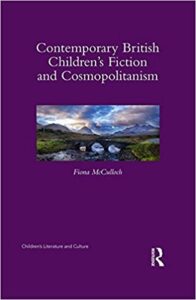
*
Works Cited
Armstrong, Paul B. How Literature Plays with the Brain: The Neuroscience of Reading and Art. The John Hopkins University Press, 2013.
Bogdan, Draganski et al., ‘Temporal and Spatial Dynamics of Brain Structure Changes During Extensive Learning’. The Journal of Neuroscience 26:23 (2006): pp.6314-6317.
Botelho and Rudman. Critical Multicultural Analysis of Children’s Literature: Mirrors, Windows, and Doors. Routledge, 2009.
Hunt, Peter (ed.) Literature for Children: Contemporary Criticism. Routledge, 1992.
McCulloch, Fiona. Contemporary British Children’s Fiction and Cosmopolitanism. Routledge, 2017.
McGillis, Roderick. ‘Criticism is the Theory of Literature: Theory is the Criticism of Literature’ in David Rudd (ed), The Routledge Companion to Children’s Literature. Routledge, 2010.
Nikolajeva, Maria. Reading for Learning: Cognitive Approaches to Children’s Literature. John Benjamins Publishing, 2014.
Rose, Jacqueline. The Case of Peter Pan; or the Impossibility of Children’s Fiction. Palgrave Macmillan, 1984.
Stephens, John. Language and Ideology in Children’s Fiction. Longman, 1992.


